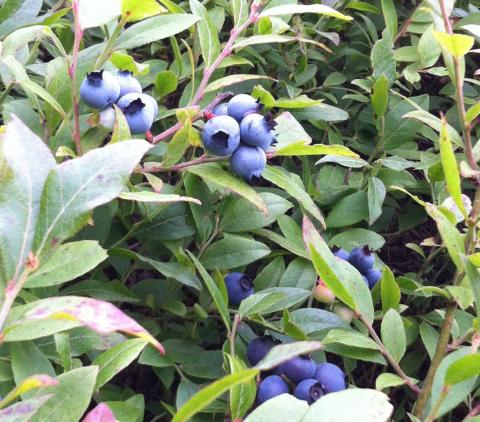Gardens In Winter: Pruning Your Blueberries and Apples

What is the most important thing you need to remember when pruning your fruit trees and bushes? The one thing you should most of all not forget? It is to prune your plants every year. A quick clip every year is the best way to ensure optimal growth and health. Apple trees, blueberry bushes and raspberries will flourish if pruned back and trained each winter. Whether your tree was planted in 2017 or by your grandfather years ago, it should be pruned this year. Many feel apprehensive about pruning a tree with only a few branches on it, but training your tree at a young age is vital to the development of it’s permanent scaffolds (or tree branches).
Consequences of semi-annual pruning, or pruning every five years when things get overgrown, include biennial bearing (when the plant over-produces one year leaving no resources for the next year), small fruit, increased incidence of disease, weakening of the tree or bush system, and general reduced vigor. Depending on what you are growing, fruit buds grow most frequently on young branches. By gently cutting back some of the older growth you allow for light to penetrate the full canopy of the crop, and allow for that young growth to slowly replace older limbs and branches. The every-five-years approach will result in removing a lot of older or dead wood all at once, causing in a big flush of new growth, all the same age the following season. Generally, we like to see limbs and branches of a variety of ages, up to about seven years old, when productivity of that limb will begin to decline.
With blueberries, removal of one to two larger branches (down to the base of the plant) each year will allow for continued renewal of the branches and result in optimal production. Blueberries (and peaches) are notoriously over-producers. You must remove some of the fruit bearing buds or the plant will over-produce causing broken, drooping limbs, which are not healthy for the plant. Failure to remove some of the potential berries or fruit each year may also cause your plant to become a biennial bearer.
I recommend pruning in late winter, after the most serious cold nights have passed. This way you can remove any branches that have sustained winter injury. Check for winter injury by scraping some of the bark off a young stem and looking at the color of the branch. A green stem is a good stem. Assess a number of branches around your tree or bush. You can also cut some fruit buds in half and assess the bud tissue. Again, green is good, brown means it has sustained winter injury and will not produce fruit.
To learn more about pruning, you can attend one of the UNH Extension workshop on pruning that happen each winter in every county in N.H. We will be pruning blueberries on April 14 at the Carroll County Farm from 10 a.m. to noon.
